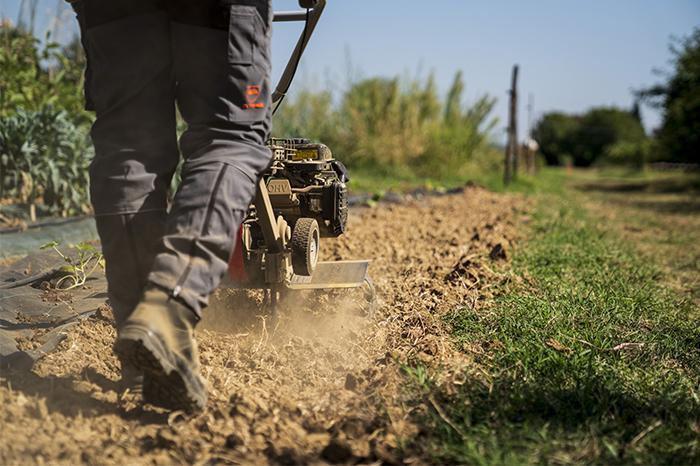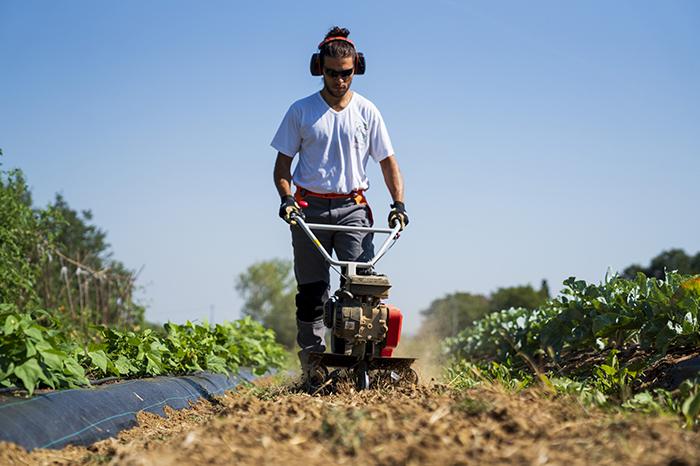How to perform false sowing

Is it disheartening when you see weeds growing and spreading uncontrolled in your garden or allotment? We thought so. But as you may already know, unfortunately the presence of weeds is inevitable because deep down, the subsoil preserves the seeds of many plant species—including weeds—which can lay dormant for years until the time is right to germinate.
Fortunately, there are different solutions for eliminating weeds from your garden and allotment without herbicides. In the following paragraphs we look at one of the best-known and most effective methods: false sowing.
What is false sowing
False sowing is a natural weeding technique that involves tilling and watering the soil in preparation for sowing, but without actually sowing. This preventive operation—often used in organic cultivation—stimulates the growth of weeds, allowing you to remove them before proceeding to till the soil and plant your seeds.
Unlike containment techniques, which are intended to reduce the number of weeds only after they have sprouted in your garden, false sowing limits their reproduction before you plant, allowing you to begin the season with a head start.
To further leverage the effect of this technique, you can populate your garden or allotment with good quality transplanted seedlings that are already healthy and vigorous. That way your plants will be more mature and resistant than the weeds, which are still in the seed stage.




How to perform false sowing
As you will have gathered, eliminating weeds with false sowing means inducing the weeds to grow by deceiving them that the conditions are right. But what steps should you follow to when false sowing? Let's check them out:
- Prepare the seed bed to soften and oxygenate the soil and facilitate drainage, using a spade, rake or petrol-driven rotary tiller.
- Irrigate the soil, providing essential water for the development and germination of the weed seeds.
- Don't sow.
- Till the soil a second time to remove the weeds. Only till the topsoil, so as not to displace deeper subsoil layers and bring up more weed seeds that are ready to germinate.
- Now the soil is ready for sowing or transplanting your seedlings.
Tools for false sowing
As mentioned already, to perform the two tillage tasks described above, you can use manual tools as appropriate, or opt for a compact rotary tiller such as the MZ 2055 K. This manoeuvrable and handy tool is equipped with an adjustable handlebar and rotor, control lever and throttle trigger. It is ideal for fast and comfortable soil tilling in small-medium gardens and allotments.
Are you worried that using a petrol-driven rotary tiller is difficult? Watch this video and you will change your mind.


Why eliminate weeds using false sowing
Why is false sowing so important? Because it ensures that invasive vegetation is already germinated and uprooted before you plant, leaving your garden or allotment free to grow and flourish. Furthermore, weeds present in the soil in the form of ungerminated seeds develop later, leaving your plants to get a good head start in their life cycle.
In addition to removing weeds from your allotment and flowerbeds, you can also use false sowing to prepare the soil for sowing grass seed, in order to preventively eliminate weeds that would otherwise ruin the lawn’s uniform height and colour.
With false sowing you free your garden from weeds without using herbicides, using a natural weeding technique. Did you know that another weeding system is cutting grass? We discussed it in our article on how to get rid of weeds naturally without herbicide, using a flail mower.



